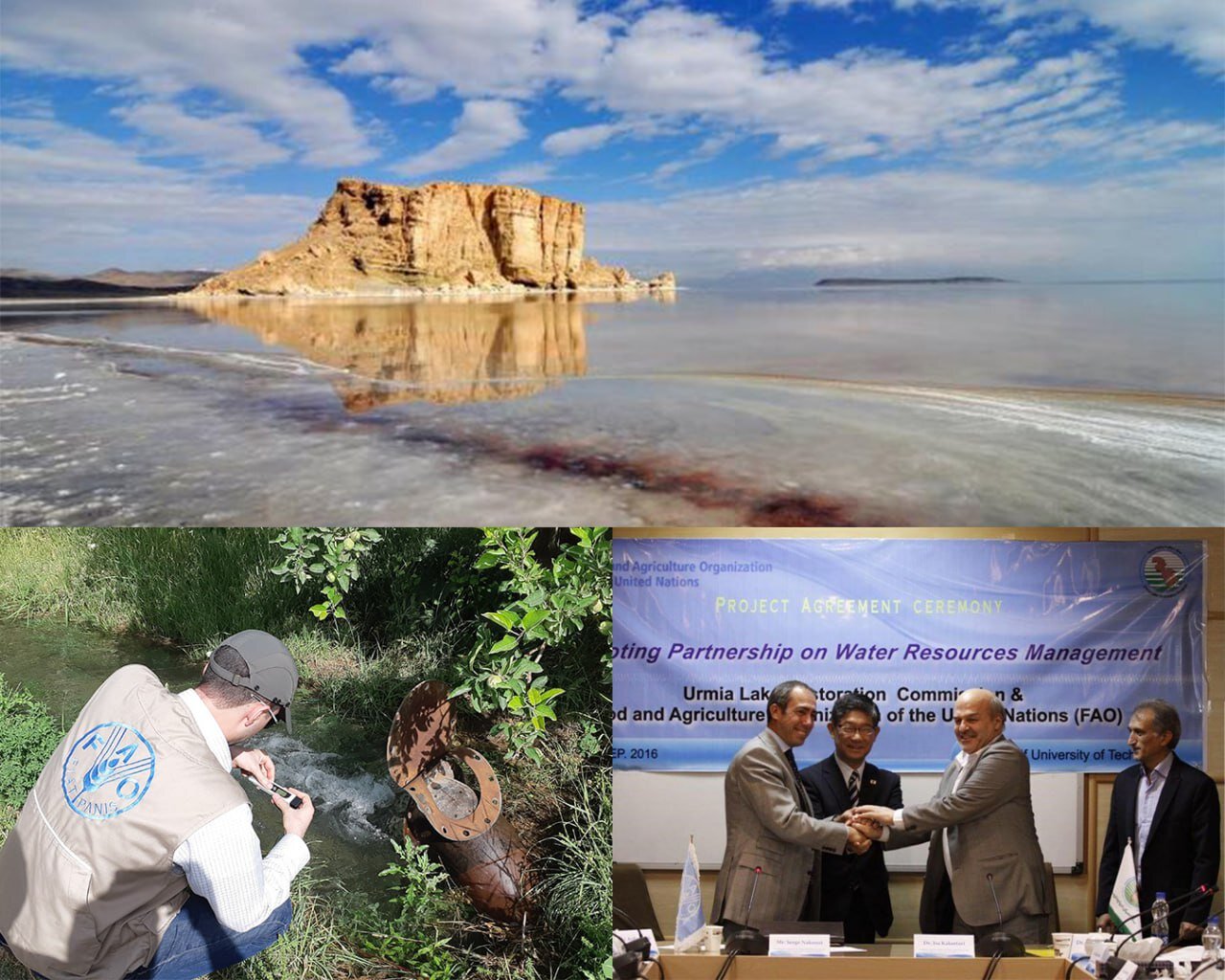Can technical solutions of Japan-funded FAO project restore Lake Urmia?

TEHRAN – The Food and Agriculture Organization of the United Nations (FAO), with the support of the government of Japan, identified technical agricultural solutions to increase water efficiency in the agriculture sector at the Lake Urmia basin, which may be efficient in saving the internationally known biosphere reserves.
Since 1995, Lake Urmia has been shrinking due to rapid upstream agricultural expansion and climate change. These forces have pushed the precious lake to the verge of depletion and have put the region’s health, economy, environment, industry, and agriculture at risk.
Despite the efforts of the Lake Urmia Restoration Programme National Committee and its focus on the Lake’s restoration since 2013, the continuation of the critical situation demonstrates that sustainability, macro and micro, management solutions should be considered as the main essence of action plans.
In a concerted effort to address the challenges facing the Lake Urmia Basin in 2016, FAO launched the "Integrated Programme for Sustainable Water Resources Management in the Lake Urmia Basin,” which was funded by the Government of Japan.
Key technical outcomes of this initiative included the implementation of a water accounting plus project in the Lake Urmia Basin and the identification of water-consuming hotspots within the basin. Notably, water accounting revealed the significant contribution of irrigated and rainfed agriculture to the Lake's total evapotranspiration, emphasizing the importance of water-saving measures for the Lake's restoration.
Another subsequent development was the establishment of a drought monitoring system by introducing and putting in place new indexes, predicting an intensified water shortage as a foreseeable future for Lake Urmia, exacerbated by rising temperatures.
Acknowledging the challenge of reducing evapotranspiration as the critical point of losing water without compromising farmers' livelihoods, the project's third phase focused on socio-economic and livelihood planning.
The fourth component of the project focused on seeing the big picture and promoting basin management and involved a comprehensive study of a sub-basin as a model for other sub-basins, resulting in the creation of a framework of Integrated Watershed Management plans aimed at reducing water consumption in the agriculture sector.
The final phase centered on developing capacity among stakeholders and partners, ensuring the effective utilization of developed tools such as water accounting plus, real water savings monitoring, and drought monitoring tools.
Translating technical solutions into tangible actions
FAO's commitment to translating studies into tangible actions was evident in the positive reception of the initial project. Responding to this success, using the outcomes of the Lake Urmia project funded by the government of Japan, FAO initiated a new project in 2023 titled "Promote Sustainable Water Management in Lake Urmia Basin by Piloting the Climate-Resilient Action Plan in Balanj Site." This operational project seeks to bridge the gap between research and action, focusing on reducing water consumption, enhancing climate resilience, and improving livelihoods in the agriculture sector of Lake Urmia.
The output of the project piloted in a 45-hectare orchard has proven 41-65% water saving. The project's achievements also included running training workshops and increasing the capacity of the farmers, providing technical consultations to farmers, conducting field measurements, and introducing an irrigation scheduling program towards further upscaling the methodology to a larger scale.
GAIN: empowering rural economy
Applying a participatory approach, known as GAIN (Governance, Autonomy, Integration, and Needs-based), also empowered rural livelihood by addressing challenges across various fields simultaneously, including Water, market, organizational setting, education, health, and agricultural production.
High agricultural water consumption is one of the major contributors to Lake Urmia drying up which, besides the environmental consequences, has gradually endangered the livelihood and health of indigenous people.
To encounter the problem FAO took steps to address problems identified by the community within a variety of fields, it also involved the idea of rural women in agricultural activities and its alternative livelihoods.
The most imperative outcome of GAIN was to provide effective strategies and interventions for participating in the restoration of Lake Urmia. Furthermore, farmers, government, and non-government sectors through the GAIN process offered a few interventions towards gradual economic empowerment, enhanced ability to provide economic services for its members, and play a more active role in the local rural economy.
Consequently, the GAIN workshop-derived intervention plans help local authorities, experts, and ministries in decision-making. Moreover, using all these aspects and priorities, an action plan can be developed and implemented for other parts of the Lake.
Commitment to restoring internationally important natural resource
Given the international and regional importance of Lake Urmia, the Government of Iran has invested a great deal of effort in restoring it as well as establishing the Lake Urmia Restoration Programme National Committee.
The Committee expressed concerns about the extreme water depletion of the Lake and requested international assistance in finding possible solutions to the problem.
Japan's substantial aid, channeled through FAO’s advanced technical expertise from 2016-2022, has not only resulted in long-lasting knowledge but also showcased its commitment to restoring this internationally important natural heritage.
Leave a Comment